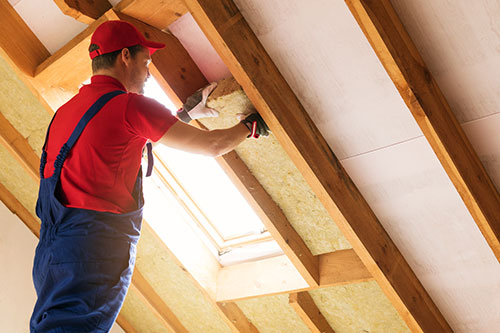From fiberglass to cellulose to foam, there are a number of modern insulation options for today’s homeowners. If you have an opportunity to choose the type of insulation for your next home or addition, here’s what you should know.
The Pros and Cons of Each Option
Since most homes are created differently, insulation needs can vary. There are several factors homeowners should consider when choosing insulation, including local climate, product performance, installation and cost. Before settling on any one type of insulation, homeowners should also focus on the product’s R-value or thermal performance rating.
- Fiberglass: The most commonly used type of insulation, fiberglass batt and blanket easily fits within standard studs and joists. Affordable pricing and widespread availability combine to make fiberglass a popular choice. Unfortunately, it is also vulnerable to moisture and mold.
- Mineral Wool: Slag or rock wool blanket and batt tends to resist fire and hold its shape better than similar fiberglass products. With up to 90 percent recycled content, it’s also friendlier to the environment. On the downside, slag or rock wool can foster mold, and just like fiberglass insulation, inhaling the product’s fibers can be dangerous.
- Loose Fill: Comprised of cellulose or fiberglass, loose-fill insulation is ideal for attics with lots of nooks and crannies. Blown through a machine, the insulation is great for filling tiny gaps. That said, as it compresses over time, it may become less effective. It is also sometimes too heavy for certain attics.
- Spray Foam: Liquid sprayed-in foam offers a high thermal performance rating and can seal the tightest of spaces. Although it does create an effective air barrier to keep a home cozy, it’s also rather expensive. At the same time, it can cut down on caulking and other home weatherizing tasks.
- Rigid Foam: Commonly made of polyurethane, polyisocyanurate or polystyrene, rigid foam panels help to slow heat transfer through studs and other structural elements. They can be glued to surfaces or easily sized to fit between beams. Unfortunately, they are more expensive than blanket and batt insulation, and they don’t always fit so well around awkward obstacles.
- Structural Insulated Panels (SIPs): These prefab panels can deliver energy savings of up to 14 percent, while also assisting with noise reduction. They can be installed in floors, ceilings and walls; however, SIPs are also quite pricey and usually only appropriate for new construction.
- Radiant Barriers and Reflective Systems: While the typical insulation system works by reducing heat conductivity, radiant barrier systems reflect heat from a home. Placed on the underside of a roof, these highly reflective materials are usually used in warmer climates to limit radiant heat transfer from the sun.
Making a Wise Choice
Choosing an effective insulation typically comes down to weighing cost, environmental impact and general effectiveness per inch. While we would all like the best of everything, however, practicality typically intervenes. When they choose to pay extra for pricier insulation, homeowners sometimes have to sacrifice other wants and desires that might go into a new home. Make sure you talk to your builder about the potential costs and sacrifices that might come along with specific types of insulation.
2-10 HBW offers the most comprehensive Home Warranty coverage for homeowners. Let us help you protect your home.







